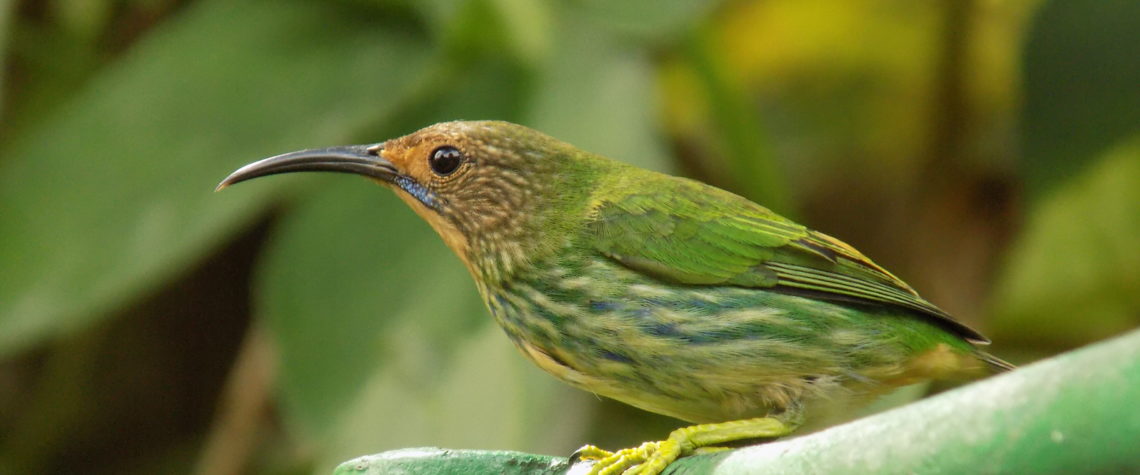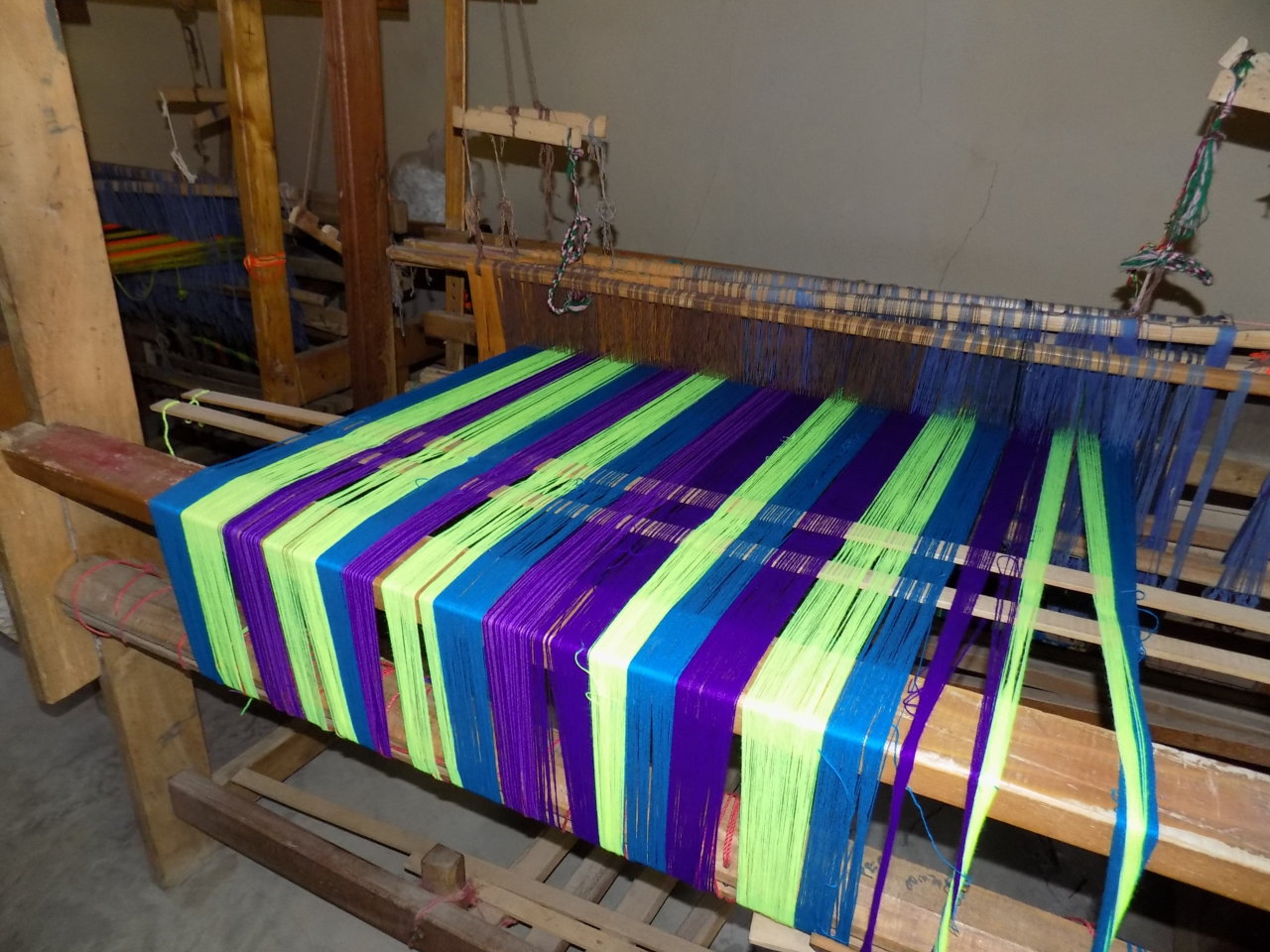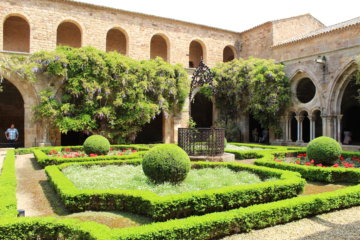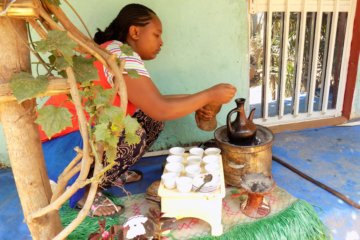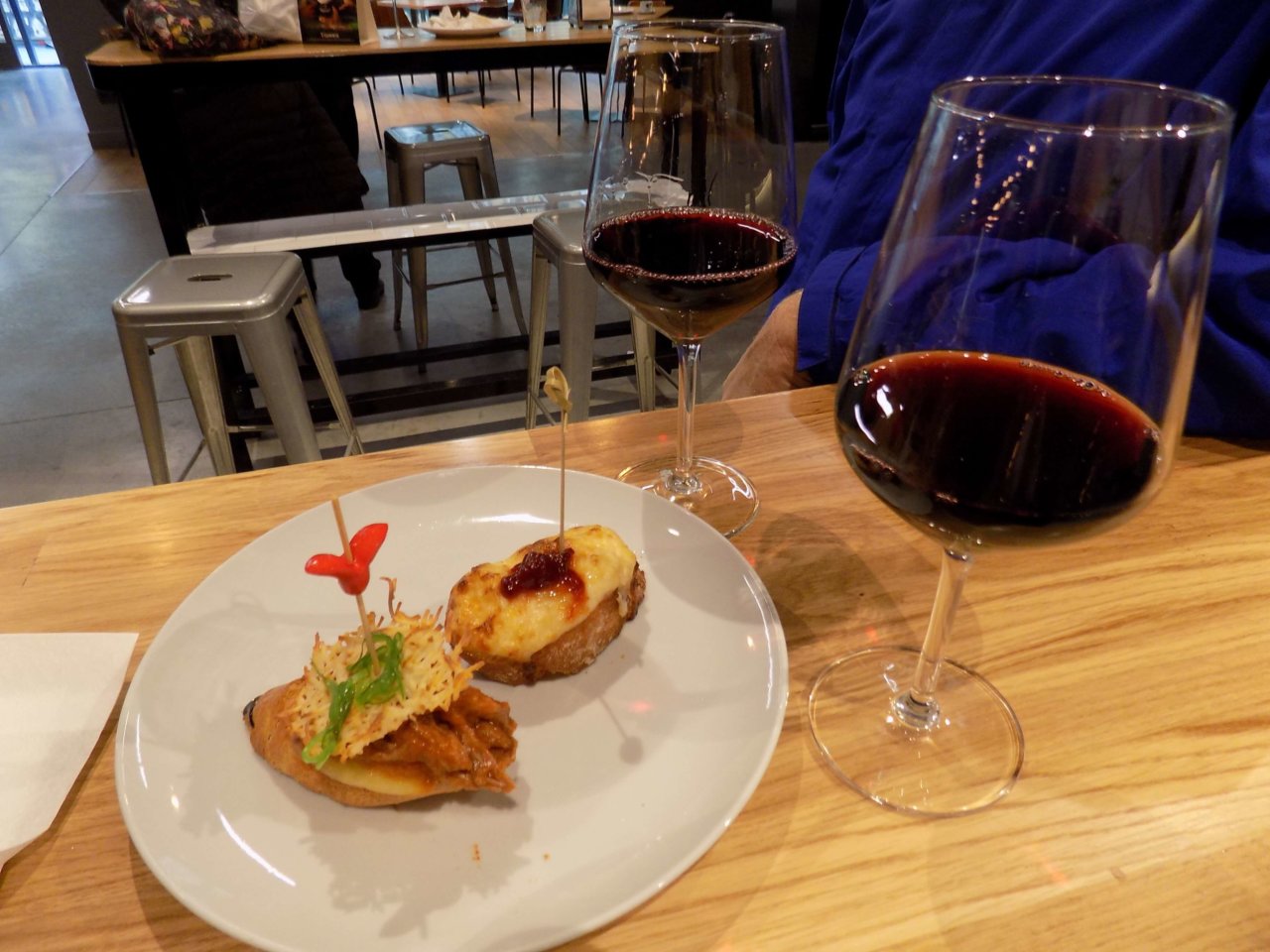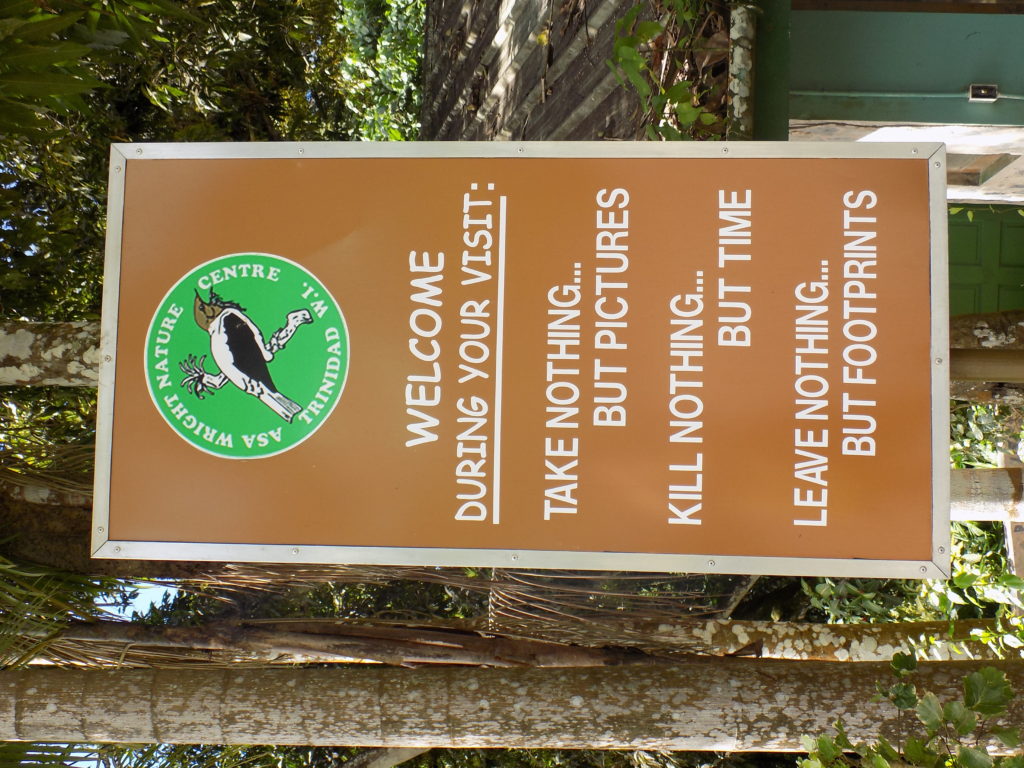
From the moment the lady at the Asa Wright Centre in Trinidad picked up the phone and responded to my enquiry as to whether we could book a tour and lunch for the following day, I knew we were in for a good time. She was so polite, helpful and, above all, enthusiastic about what we were booking. Her joyous manner was infectious and as the call ended with her assurance that we would have the time of our lives, I had no doubt that she was telling the truth!
As it turned out, perhaps it wasn’t actually ‘the time of our lives’, but it was certainly a very enjoyable day.
In this article
Visiting The Asa Wright Nature Centre
The 1500-acre Asa Wright Nature Centre is internationally famous and attracts naturalists and birdwatchers from all over the world. It is a must-see destination in Trinidad. Visitor numbers are limited in order to protect the natural environment, so you must book in advance. There are two ninety-minute tours each day, one at 10.30am and one at 1.30pm, and, unless you are resident at the centre, in which case you can wander the grounds at will, this is the only way to see anything. It’s definitely worth combining a tour with lunch or afternoon tea, both of which are delicious and are served in the colonial-style dining room with stunning views over the gardens.
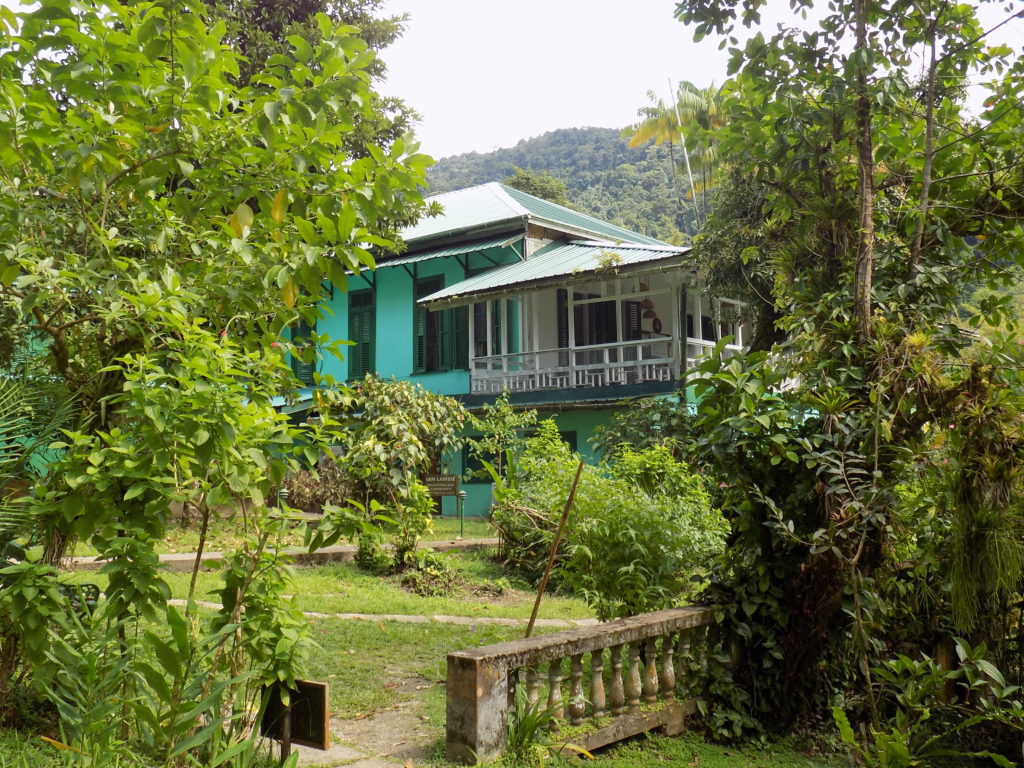
Day visitors are encouraged to arrive early in order to spend some quality time watching the birds from the elegant veranda. We got to the centre at about 9.30am, an hour early for our morning tour, having survived a perilous drive along an increasingly pot-holed road. This is generally the state of all the roads in Trinidad and you quickly learn to drive with your eyes glued on the tarmac in front of you (if there is any!), rather than the lovely views out of the windows – more about this in another post!
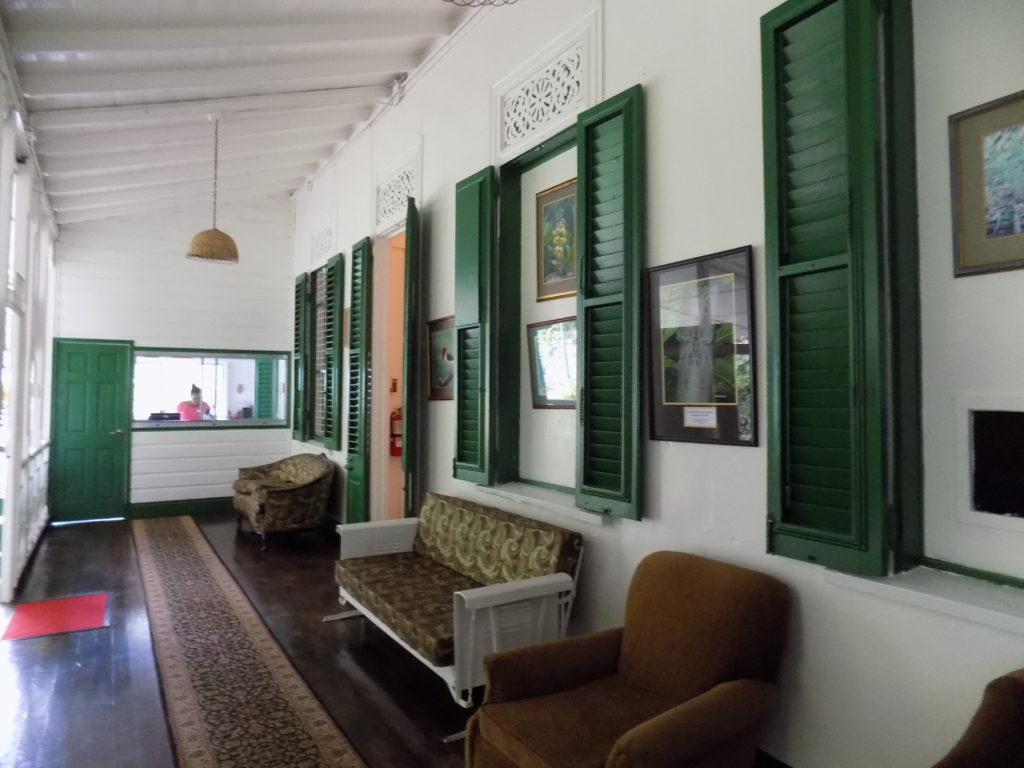
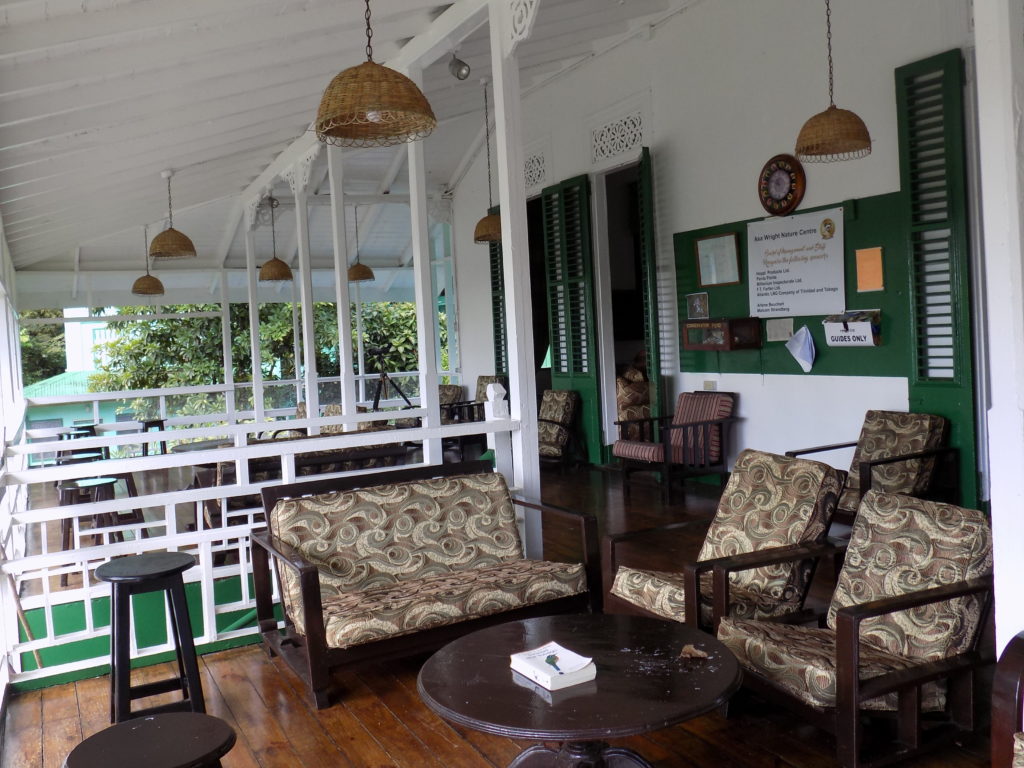
History of the Asa Wright Centre
The centre was originally a coffee, citrus and cocoa plantation. In 1947, it was bought by keen birdwatchers Newcome Wright and his Icelandic wife, Asa. They began accommodating researchers from the Simla Tropical Research Station next door and, at the same time, Asa started feeding the birds she saw in her garden, thus attracting many more.
After her husband died, Asa sold the land, and the lovely house they’d built on it, on the condition that it remained a conservation area. Her wishes were carried out and a non-profit-making trust was set up in 1967 to establish a nature centre, the first in the Caribbean. Simla donated its land and research station to the centre in 1970 and, although research is still undertaken here, today Asa Wright is mainly visited by amateur birdwatchers. It’s certainly a lovely spot! At 360 metres above sea level, the house, with its polished mahogany floors, stately heirlooms and antique furniture, affords spectacular views of the Arima Valley rainforest.
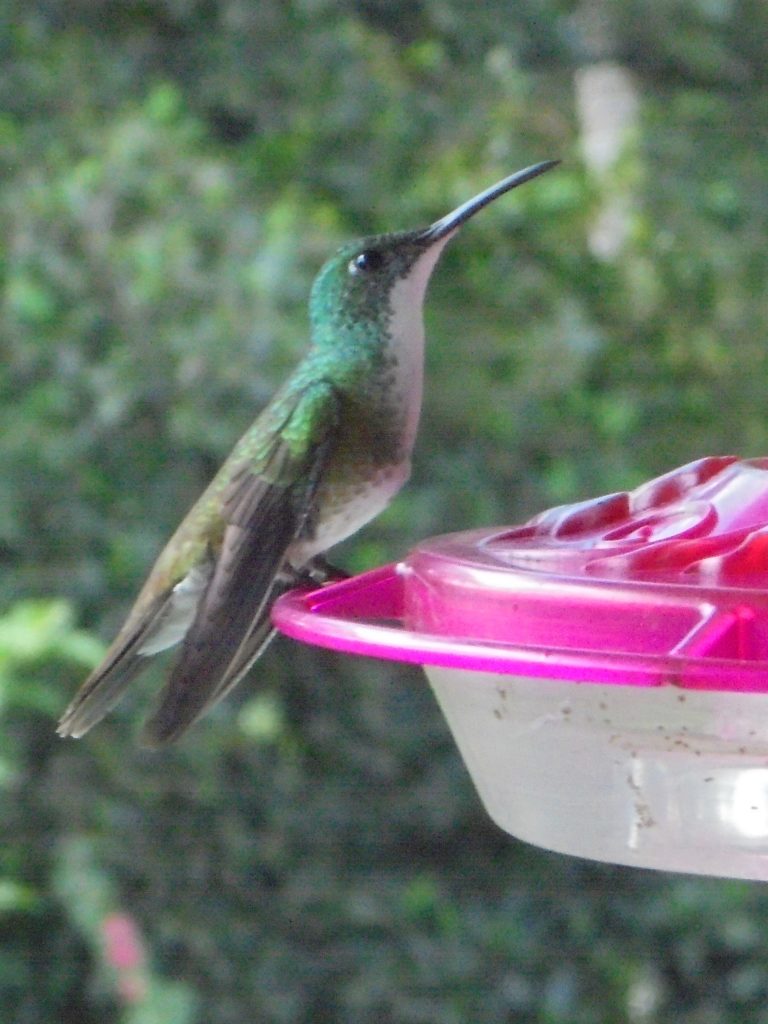
Before the Tour
We spent the hour before our tour admiring these views, as well as the paintings and photographs on the walls of the reception rooms, many of which depicted the endlessly fascinating hummingbirds for which Trinidad is rightly renowned. There were other photos showing visits by world figures, including members of the British royal family. Even though we are not twitchers, we were mesmerised by the array of birds attracted to the feeders on the veranda and tried in vain to capture them on film.
The Tour
Caleb, our guide, arrived promptly and gave us a brief introduction to the centre before leading us on our 90-minute walk through the rainforest. His commentary was interesting and entertaining. He explained to us all about the hummingbirds (more about them in a separate post) and other bird species we were seeing, as well as countless insects and plants. The leaf cutter ants were amazing! Who knew that such tiny creatures could build such large structures (u to six metres across and several metres deep) and live such long lives (up to 25 years)?
We were lucky to see the White Bearded Manakin, but the Bearded Bellbird, whose image appears on the centre’s logo, remained elusive. We heard its loud and distinctive call but didn’t see it.
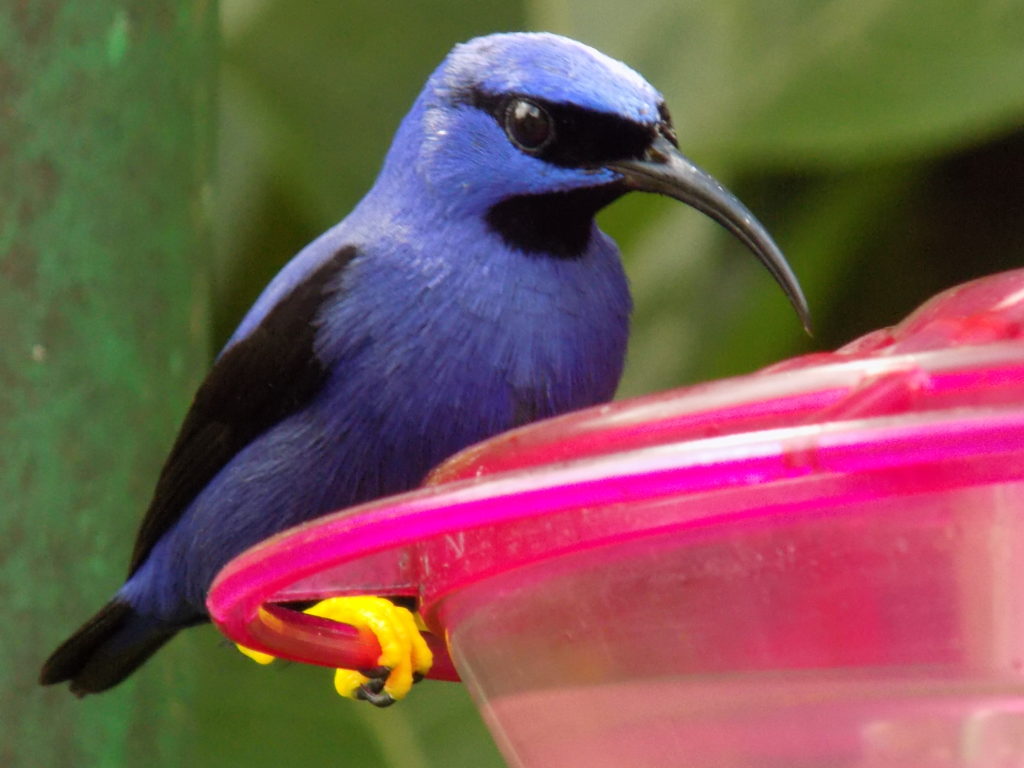
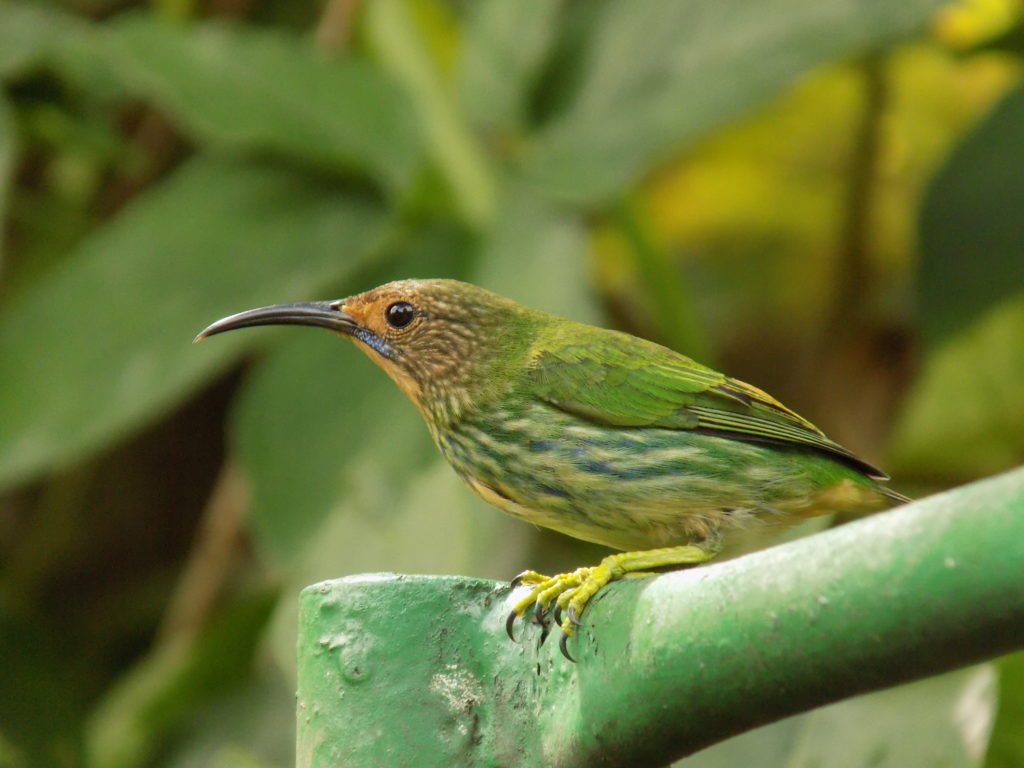
We were interested to learn that many of the trees that proliferate in the rainforest are not native to the Caribbean. The citrus trees, for example, were planted by the British in order to provide fruit for sailors to prevent them from developing scurvy on the long voyage home. Mangoes, of which there are now 100 varieties growing in Trinidad, were introduced by Indian immigrants who wanted a taste of home.
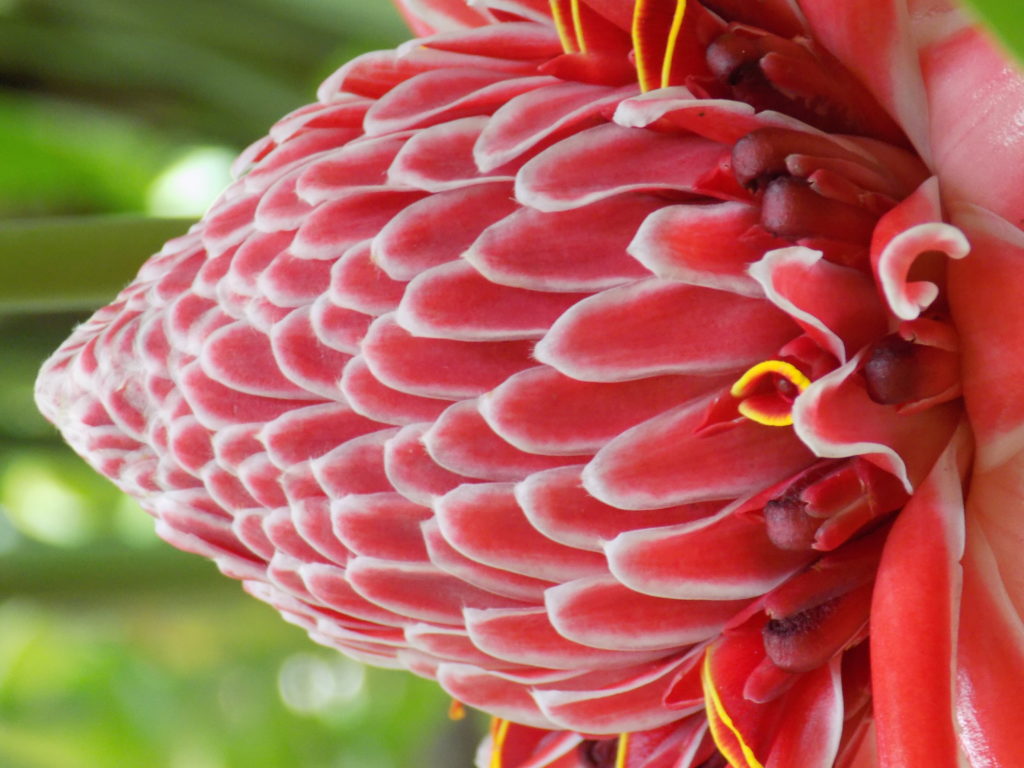
We also saw giant bamboo – taller than any I’ve ever seen! Caleb explained that it’s the largest and fastest growing plant on earth. It will grow through anything – stone wood, even human flesh! In World War Two, the Japanese would torture POWs by tying them to bent bamboo and leaving them there. It wouldn’t be long before the bamboo started growing into their bodies!
With that gruesome story ringing in our ears, we made our way back to the house for lunch. Luckily, it didn’t put us off our chicken legs, fish, salad and rice, followed by cake and custard washed down with estate-grown coffee!
Read more about Trinidad and its birds!
If you like what you’ve read, please pin it!
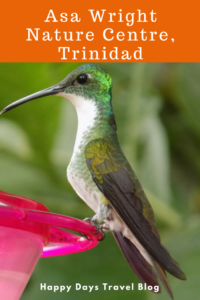
If you’re travelling soon, please use these links!
Are you travelling soon? Use these links when making your bookings. These are the companies we use. It won’t cost you any extra, but we will earn a few pennies to help keep Happy Days Travel Blog going. Thank you!!
- Book your travel insurance with World Nomads (Never leave home without protecting yourself, your trip and your belongings!)
- Book your flight with Skyscanner
- Book your accommodation with Booking.com
- Book a tour with Tour Radar or Intrepid Travel
- Book city tours and activities with Get Your Guide
Disclosure: This post contains affiliate links. If you click through for more information, or to make a purchase, it may result in a small commission coming my way. Please note that there is no extra cost to you associated with this. Thank you so much for supporting my site.
Join our mailing list

Sign up to receive our monthly newsletter. Keep up with what we're doing and be the first to receive special offers and insider tips.

